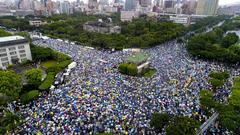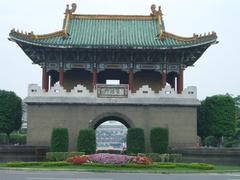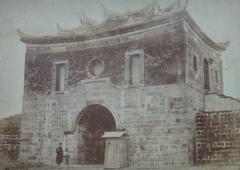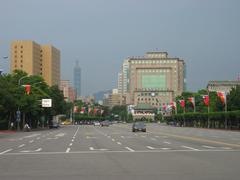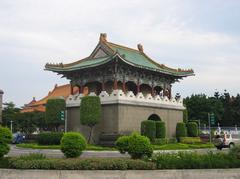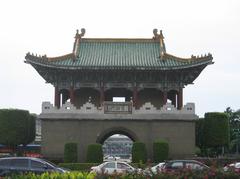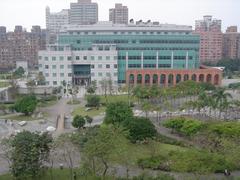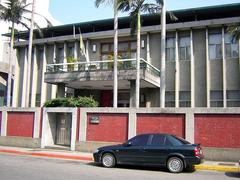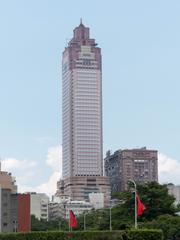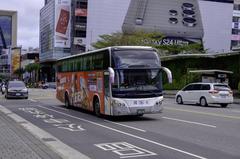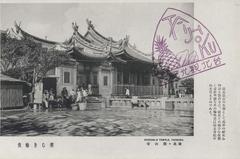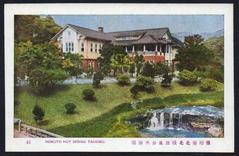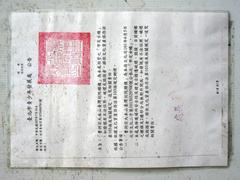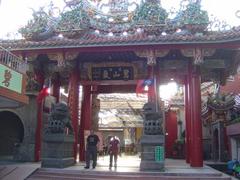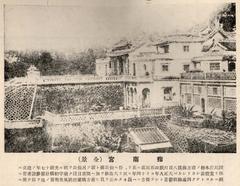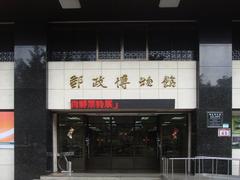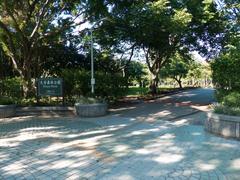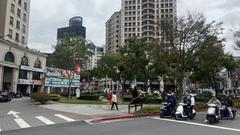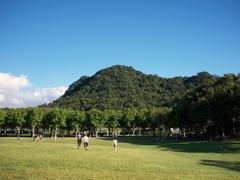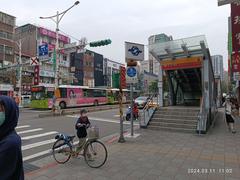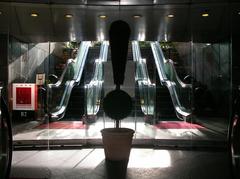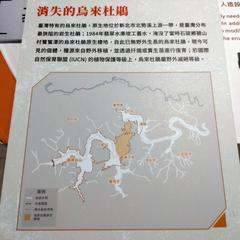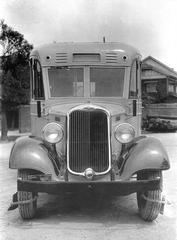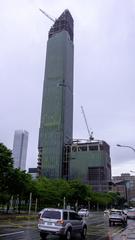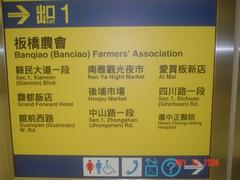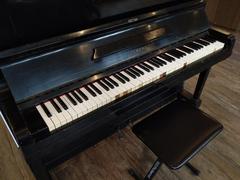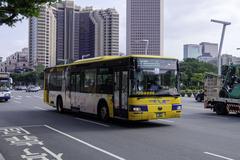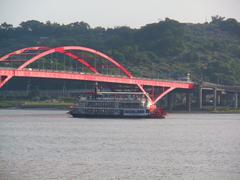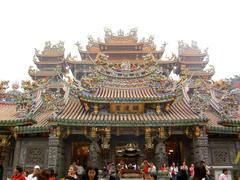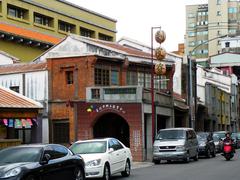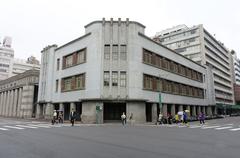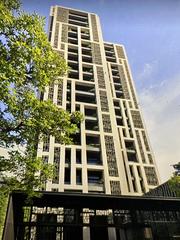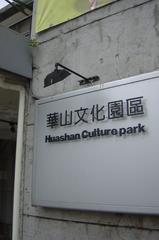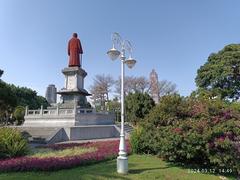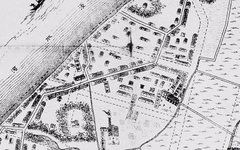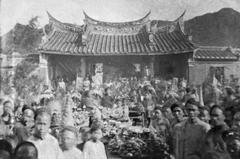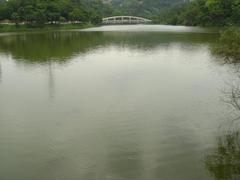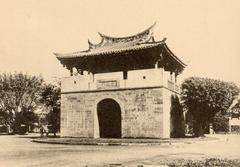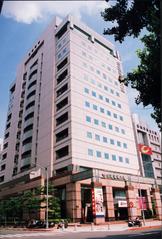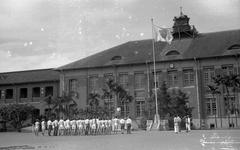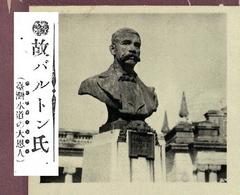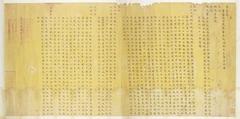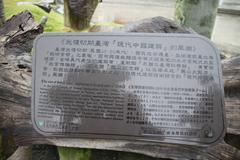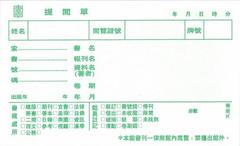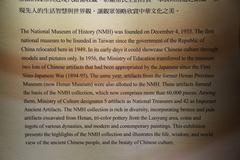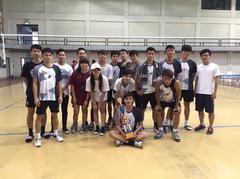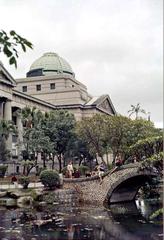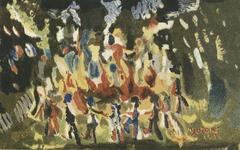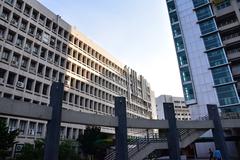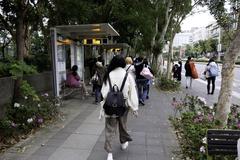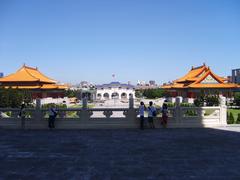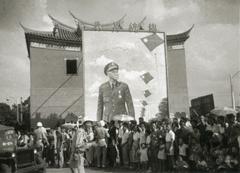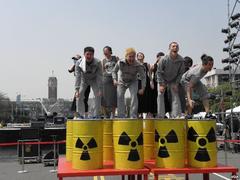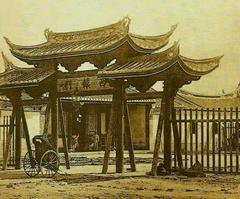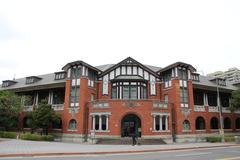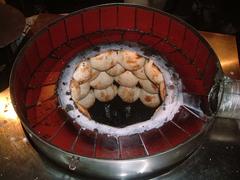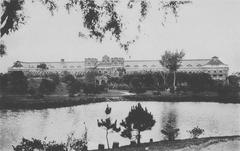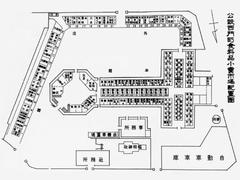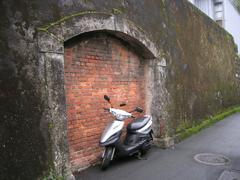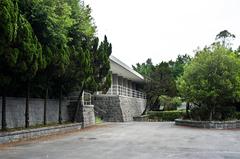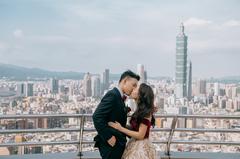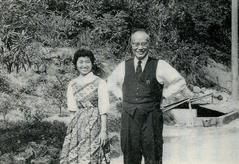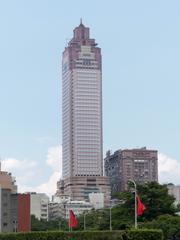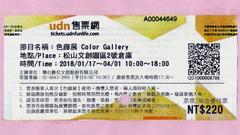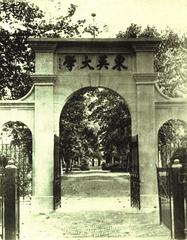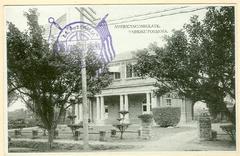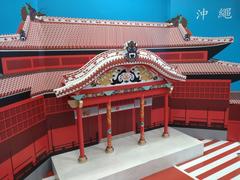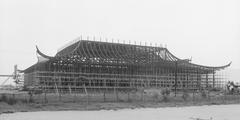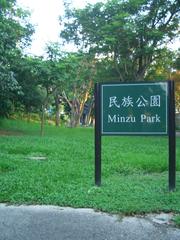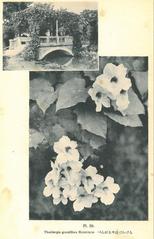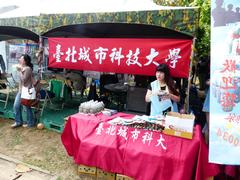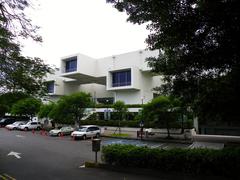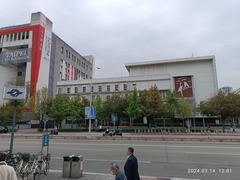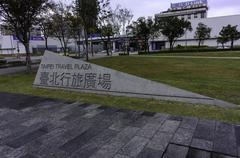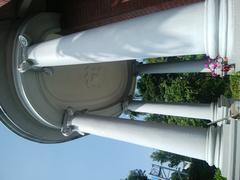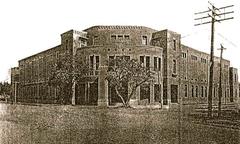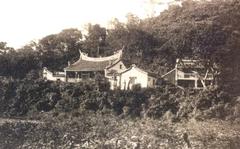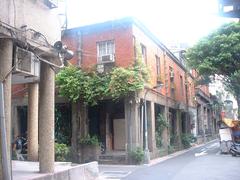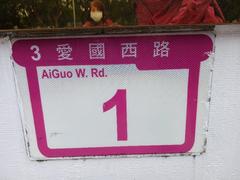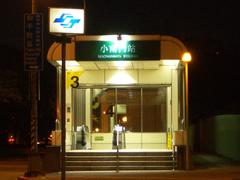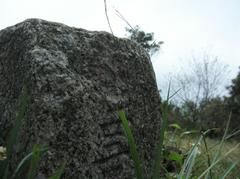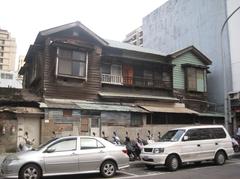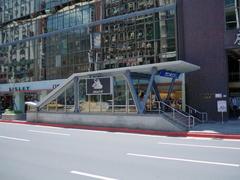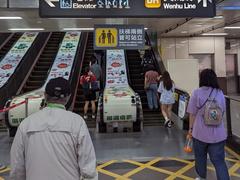
Taipei City Wall East Gate: Visiting Hours, Tickets, and History Guide
Date: 14/06/2025
Introduction
The Taipei City Wall East Gate, also known as Jingfumen (景福門), is a prominent historical monument reflecting Taipei’s transformation from a Qing Dynasty walled city into a vibrant modern capital. As one of the few surviving gates from the original city wall constructed in 1884, the East Gate stands as a testament to the city’s resilience, cultural heritage, and architectural ingenuity. Whether you are a history enthusiast, architecture admirer, or a traveler exploring Taipei’s historical heart, the East Gate offers a rich and accessible experience.
This comprehensive guide provides detailed information on the East Gate’s history, architectural features, visiting hours, ticketing, accessibility, and nearby attractions. It draws on authoritative sources such as the Taiwan Tourism Administration, Taiwan Obsessed, and BOCH Taiwan, ensuring accurate and up-to-date insights (Taiwan Tourism Administration; Taiwan Obsessed; BOCH Taiwan).
Table of Contents
- Introduction
- Historical Origins and Construction
- Architectural Features and Restoration
- Cultural and Urban Significance
- Visiting Information: Hours, Tickets, and Getting There
- Accessibility and On-Site Amenities
- Nearby Attractions and Suggested Itineraries
- Visual and Media Highlights
- Frequently Asked Questions (FAQ)
- Conclusion and Key Tips
- References
Historical Origins and Construction
The Taipei City Wall, with its East Gate, was built in 1884 under the Qing Dynasty during Emperor Guangxu’s reign. The construction followed Taipei’s designation as the capital of the newly established Taiwan Prefecture. Supervised by Governor Liu Ming-chuan, the wall and its five main gates were strategically designed for defense and ceremonial purposes, with the East Gate facing the port of Keelung to welcome dignitaries and regulate commerce (Taiwan Tourism Administration; Taiwan Obsessed).
The wall spanned nearly five kilometers, enclosing what is now central Taipei. The East Gate stood at a primary intersection, marking an important entry point for trade and official processions. Fengshui principles guided its placement and orientation, aligning the city with Qixing Mountain for prosperity and harmony (AMCHAM Taiwan).
Architectural Features and Restoration
The East Gate is a classic example of Qing fortification, blending defensive utility with ceremonial grandeur. Its two-story structure features:
- Granite Base and Thick Masonry Walls: Providing formidable protection.
- Arched Passageway: Allowing controlled access and processions.
- Upturned Roof Eaves and Glazed Tiles: Typical of traditional Chinese architecture, believed to ward off evil and invite good fortune.
- Decorative Elements: Intricate carvings of clouds, dragons, and phoenixes, symbolizing imperial authority and harmony.
- Inscribed Plaque: The name “Jingfu” (景福, “Scenic Prosperity”) in traditional calligraphy, reinforcing civic pride (Wikipedia).
During the Japanese colonial era (1895–1945), most of the city wall was dismantled for urban development, but the East Gate was preserved due to public advocacy and its cultural significance. Restoration efforts have maintained its historical appearance using traditional materials and techniques, and nighttime illumination now highlights its architectural beauty (BOCH Taiwan).
Cultural and Urban Significance
The East Gate symbolizes Taipei’s urban evolution, bridging its Qing Dynasty origins with its present identity as a modern metropolis. It was originally a ceremonial gateway for officials and a checkpoint for commerce, shaping the development of surrounding neighborhoods. The gate’s survival and preservation represent local commitment to heritage, even as Taipei has rapidly modernized.
Today, Jingfumen is a focal point for festivals, public gatherings, and cultural events. Its name, meaning “Scenic Prosperity,” reflects aspirations for peace and flourishing. The gate is often featured in art, literature, and media, reinforcing its place in the city’s collective memory (Taiwan Obsessed).
Visiting Information: Hours, Tickets, and Getting There
- Opening Hours: The East Gate is accessible 24 hours a day as an outdoor monument. There are no restricted visiting hours, making it easy to plan your visit at any time.
- Tickets: Admission is free. There are no tickets required for exterior viewing or photography.
- Guided Tours: Local tour operators and heritage organizations often include the East Gate in walking tours. Check official tourism websites or visitor centers for the latest schedules.
- Best Time to Visit: Early mornings and evenings are ideal for softer light, fewer crowds, and stunning illumination. The gate is especially photogenic at sunset and night.
Getting There
- MRT:
- Chiang Kai-Shek Memorial Hall Station (R08/G10): Exit 1 or 2, walk northeast along Ketagalan Boulevard (approx. 5 minutes).
- NTU Hospital Station (R09): Exit 1, walk east on Xuzhou Road, then south on Zhongshan South Road.
- Taipei Main Station: 15–20 minutes on foot or a short taxi ride.
- Buses: Multiple city bus lines stop nearby.
- YouBike: Bicycle rental stations are within a short walk for eco-friendly access (Taipei Travel).
Accessibility and On-Site Amenities
- Wheelchair and Stroller Access: The area surrounding the gate features flat, wide sidewalks and curb cuts for easy mobility.
- Restrooms: Available at nearby parks and MRT stations.
- Visitor Information: Closest centers are at Taipei Main Station and Chiang Kai-Shek Memorial Hall (Taipei Visitor Information Center).
- Seating & Shade: Limited near the gate, but 228 Peace Memorial Park nearby offers benches and green space.
- Safety: The area is well-patrolled and illuminated, making it safe for visitors at all hours.
Nearby Attractions and Suggested Itineraries
The East Gate’s central location makes it easy to combine with other top Taipei sites:
- Presidential Office Building: Across Ketagalan Boulevard; guided tours available by reservation.
- Liberty Square: Home to Chiang Kai-Shek Memorial Hall, National Theater, and National Concert Hall (10 minutes’ walk).
- 228 Peace Memorial Park: A tranquil park with a museum on Taiwan’s modern history.
- Dihua Street and Dadaocheng: Taipei’s old town with heritage shops and tea houses, easily reached by MRT or taxi (Chloe’s Travelogue).
Suggested Itinerary:
Half-day visit covering the East Gate, Liberty Square, and 228 Peace Memorial Park for a rich historical and cultural experience.
Visual and Media Highlights
- Photography: The East Gate is especially striking in early morning or night light. For the best results, frame the gate with the Presidential Office or Ketagalan Boulevard in the background.
- Nighttime Illumination: The gate is beautifully lit after sunset, creating a dramatic urban landmark.
- Virtual Tour: Explore the gate digitally through BOCH Taiwan’s virtual resource.
- Alt Text Suggestions: Use phrases like “Taipei City Wall East Gate daytime view,” “Illuminated Jingfu Gate at night,” and “Taipei historical monument” for images.
Frequently Asked Questions (FAQ)
Q: What are the East Gate’s visiting hours?
A: The site is open 24/7 for exterior viewing.
Q: Is there an entrance fee or ticket required?
A: No, visiting the East Gate is free.
Q: How do I get there via public transport?
A: MRT stations Chiang Kai-Shek Memorial Hall and NTU Hospital are both close by.
Q: Is the site accessible for wheelchairs and strollers?
A: Yes, the surroundings are flat and paved.
Q: Are there restrooms at the site?
A: Use facilities in nearby parks or MRT stations.
Q: Can I enter the building or climb the gate?
A: No, the gate is for exterior viewing only.
Q: Is it safe to visit at night?
A: Yes, the area is well-lit and secure.
Q: Are guided tours available?
A: Yes, many local operators offer walking tours including the East Gate.
Conclusion and Key Tips
The Taipei City Wall East Gate is a must-see for anyone interested in Taipei’s history and cultural fabric. Its free, year-round accessibility, central location, and proximity to other major attractions make it ideal for all types of visitors. Take time to appreciate its architectural details, learn about Taipei’s urban evolution, and explore neighboring landmarks for a deeper experience.
Practical Tips:
- Visit during early morning or evening for the best light and atmosphere.
- Bring water, sun protection, and an umbrella in summer months.
- Check for special events or guided tours to enhance your visit.
- Use official resources for maps and updates on accessibility or temporary restrictions.
For more personalized tips, maps, and updates, download the Audiala app, check out our related posts on Taipei’s historical sites, and follow us on social media.
References
- Taiwan Tourism Administration
- Taiwan Obsessed
- BOCH Taiwan
- Taipei Travel
- AMCHAM Taiwan
- Wikipedia
- Chloe’s Travelogue
